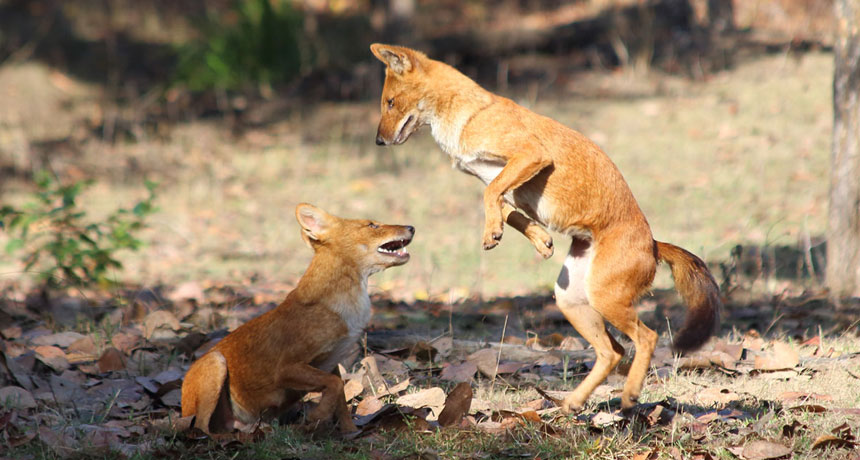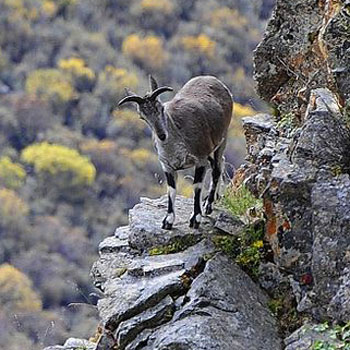Wild dogs cause problems for people in Nepal

The endangered dhole preys on livestock in Nepal, putting the wild dogs in conflict with humans, a new study finds.
Fabrice Stoger/Wikimedia Commons (CC-BY-SA 3.0)
- More than 2 years ago
The dhole looks like a cross between a gray wolf and a red fox. Cuon alpinus, also known as the Indian or Asiatic wild dog, is a pack-living canid native that can be found in central and Southeast Asia, and it’s endangered. There are only about 2,500 dogs left in the wild because their prey is disappearing, they’re losing wild space, they’re plagued by domestic dog diseases, and people kill them.
Despite the species’ conservation status, we don’t know a whole lot about the dogs’ habitats and ecology in many parts of their range. And that hampers any efforts to increase their numbers or stem the decline.
In Nepal, dholes are known to inhabit Chitwan National Park and Kanchenjunga Conservation Area, but their presence in the rest of the country has been unknown, or at least unrecorded. But in the 1990s, there were reports that the dogs lived in the Dhorpatan Hunting Reserve, a protected area in the western part of Nepal that the government set aside for hunting. Now a team of researchers has confirmed the presence of dholes in the reserve and found plenty of opportunity for conflict with locals and other wildlife.

Achyut Aryal of Massey University in Palmerston North, New Zealand, and colleagues conducted a survey of the hunting reserve in 2012, searching for dholes and evidence of the animals, such as scat and animals they had killed. They also spoke with 89 locals, asking about their attitudes toward the dogs and any times in which the dholes had killed livestock. Though many people would look at this area of Nepal and consider it remote and uninhabited, small villages sit near the reserve, and herders move their livestock within it.
The team found a handful of dholes: a three-dog pack, a seven-dog pack and a single dog on its own. Based on sightings and other evidence of the dogs’ presence, it appears the dholes roam most habitats but avoid barren lands, juniper and fir forests, and places where humans practice hunting or forestry. And dholes’ diets are varied and include serow (a goat-antelope), musk deer, blue sheep and livestock, the researchers report in the February Journal of Mammalogy.
Though it appears that the dholes are only opportunistically hunting livestock — rather than deliberately traveling to their shelters to feast on penned animals — the local people are not happy with the predators. They reported losing dozens of cows and goats yearly, and they did not hesitate to use poison to get rid of the troublesome dogs.
That may eliminate the immediate problem, but the researchers note that such a strategy is likely to cause other issues. Poisoning not only reduces numbers of an endangered dog but also indiscriminately eliminates other species, such as leopards, and allows an increase in wild boars, thereby upsetting the local ecology.
The blue sheep represent another problem. Blue sheep — which are more gray than blue — are one of the big draws for the hunting reserve. If quotas for hunting don’t take into consideration the fact that blue sheep are being killed by dholes as well as humans, management authorities could be setting up the sheep for a quick decline.
“Such conflicts present a major challenge for conserving dhole populations,” the researchers note, “and it is important that these issues are resolved because once a population becomes locally extinct, it is hard to re-establish.” They hope that with the knowledge from their survey can help in the development of a conservation action plan for the dholes and successfully manage their co-existence with the local population.






